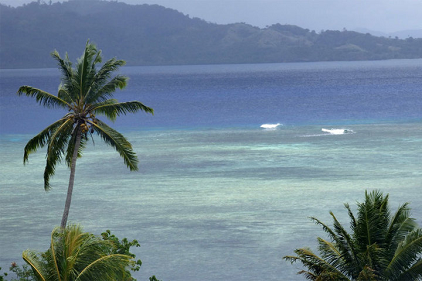
Rising sea levels and more extreme weather events pose an imminent threat to low-lying atoll islands across the Pacific. Shown here, Rabi Island in Fiji. (Photo UN OCHA/Danielle Parry)
By Robert Glasser (UN Secretary-General’s Special Representative for Disaster Risk Reduction and head of the UN Office for Disaster Risk Reduction)
Geneva, 13 November, 2017 - The Kyoto Protocol was adopted 20 years ago and since then we have seen an explosion of extreme weather events which have cost many lives and made the struggle to end poverty more challenging than it otherwise needs to be.
About 90 percent of recorded major disasters are now weather and climate related. Extreme weather has played a role in the first rise in 10 years in the numbers of people who go hungry every day.
In 2016, the numbers of people suffering from food insecurity rose from 777 million to 815 million or 11 percent of the global population.
Problems of acute food insecurity and malnutrition tend to be magnified where natural hazards such as droughts and floods compound the consequence of conflicts. The challenge of addressing this critical issue is underlined by the fact that 20 countries have declared drought emergencies in the last 18 months.
Over the last two years, the food security situation has visibly worsened in parts of sub-Saharan Africa, South Eastern and Western Asia linked in part to the El Niño phenomenon and climate-related shocks.
Since the first attempt to establish an internationally binding agreement to reduce greenhouse gas emissions, under the Kyoto Protocol, those emissions have continued to rise and new records have piled up in terms of hottest years on record, Arctic ice melt, most intense storms to make landfall and widespread droughts.